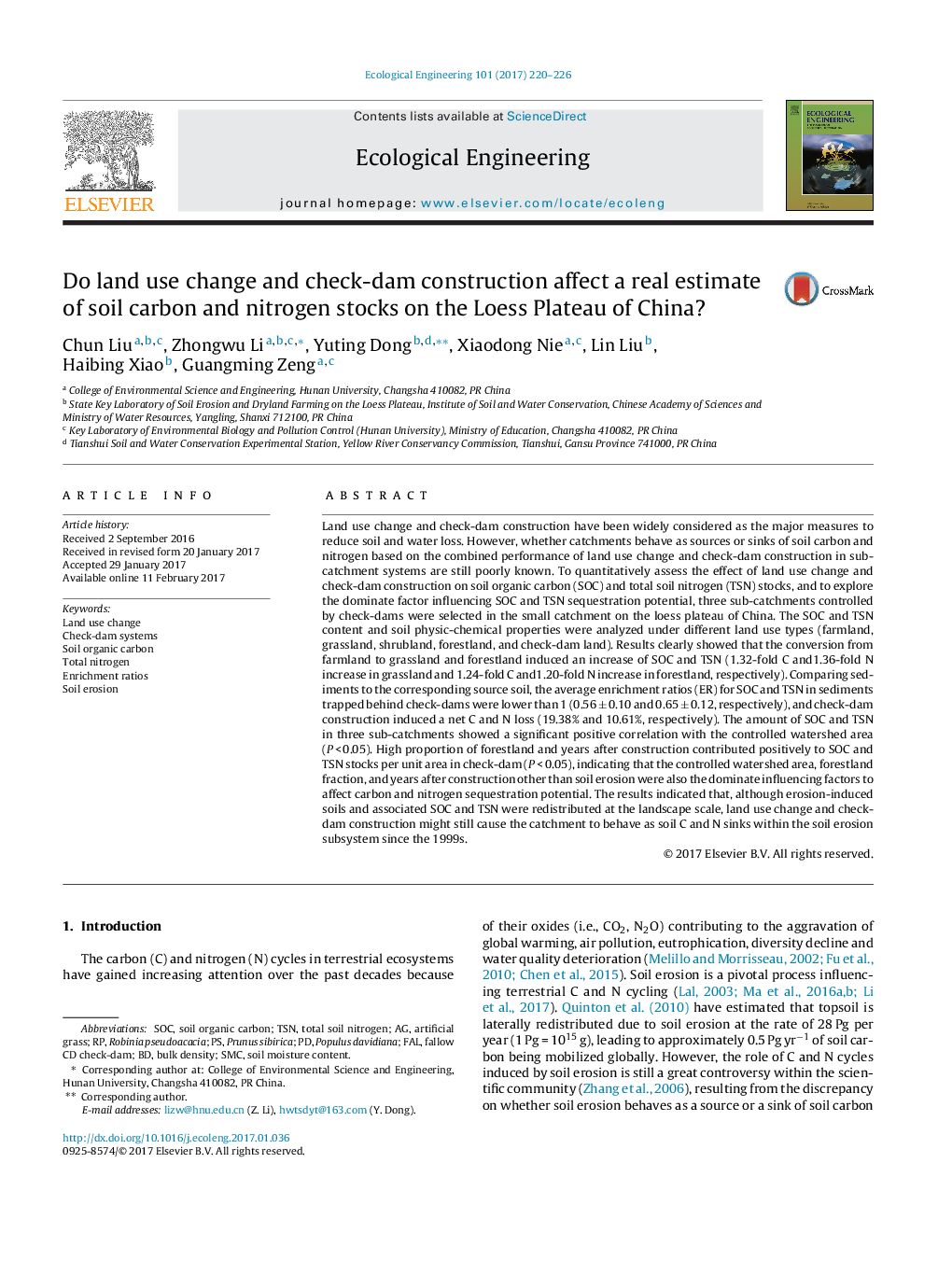| Article ID | Journal | Published Year | Pages | File Type |
|---|---|---|---|---|
| 5743932 | Ecological Engineering | 2017 | 7 Pages |
â¢Combined performance of land use change and check-dam construction on soil carbon and nitrogen stocks were analyzed.â¢Enrichment ratios for SOC and TSN in sediments were lower than 1.â¢Check-dam construction induces a net C or N loss comparing sediments to the corresponding source soil.â¢Soil conditions and the main characteristic of sub-catchment dominate carbon and nitrogen sequestration potential.
Land use change and check-dam construction have been widely considered as the major measures to reduce soil and water loss. However, whether catchments behave as sources or sinks of soil carbon and nitrogen based on the combined performance of land use change and check-dam construction in sub-catchment systems are still poorly known. To quantitatively assess the effect of land use change and check-dam construction on soil organic carbon (SOC) and total soil nitrogen (TSN) stocks, and to explore the dominate factor influencing SOC and TSN sequestration potential, three sub-catchments controlled by check-dams were selected in the small catchment on the loess plateau of China. The SOC and TSN content and soil physic-chemical properties were analyzed under different land use types (farmland, grassland, shrubland, forestland, and check-dam land). Results clearly showed that the conversion from farmland to grassland and forestland induced an increase of SOC and TSN (1.32-fold C and1.36-fold N increase in grassland and 1.24-fold C and1.20-fold N increase in forestland, respectively). Comparing sediments to the corresponding source soil, the average enrichment ratios (ER) for SOC and TSN in sediments trapped behind check-dams were lower than 1 (0.56 ± 0.10 and 0.65 ± 0.12, respectively), and check-dam construction induced a net C and N loss (19.38% and 10.61%, respectively). The amount of SOC and TSN in three sub-catchments showed a significant positive correlation with the controlled watershed area (P < 0.05). High proportion of forestland and years after construction contributed positively to SOC and TSN stocks per unit area in check-dam (P < 0.05), indicating that the controlled watershed area, forestland fraction, and years after construction other than soil erosion were also the dominate influencing factors to affect carbon and nitrogen sequestration potential. The results indicated that, although erosion-induced soils and associated SOC and TSN were redistributed at the landscape scale, land use change and check-dam construction might still cause the catchment to behave as soil C and N sinks within the soil erosion subsystem since the 1999s.
